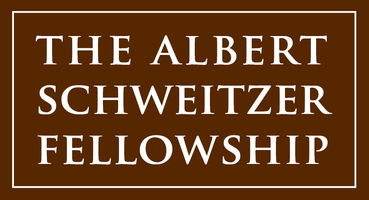North Carolina Schweitzer Fellows Shannon Schroeder and Shane Stone know from personal experience the toll that growing up with an alcoholic parent takes on a child.
“Growing up with a severely alcoholic father was challenging,” says Schroeder. “I often felt alone, different, and misunderstood.”
Stone survived his turbulent childhood thanks to other supportive adults in his life. “I know that the support I received growing up helped keep me from traveling down a darker path,” he says.
As a student at Wake Forest School of Medicine, Stone learned of the Adverse Childhood Experiences Study (ACES), an influential long-term study launched in the 1990s that shows an association between adverse childhood experiences—i.e. physical abuse, sexual abuse, neglect, domestic violence, household substance abuse—and increased risk for an array of social and health problems later in life. He knew from his own life experience that, with proper intervention while they are still young, kids could avoid growing into antisocial behavior and poor health in adulthood.
That’s how Schroeder, who is also a Wake Forest med student, and Stone came to start Legacy Group, a year-long program for foster children affected by adult drug or alcohol abuse. The group meets two times a week at their community site, The Children’s Home, a residential foster care program.
The group’s name was inspired by the ACES findings and a talk by on addiction by Jerry Moe, national director of the Children’s Program at the Betty Ford Center, who Stone heard last summer. “Jerry talked about how many families have a legacy of addicts and how it is up to us to break that legacy,” says Stone.
“I was fortunate enough to overcome my father’s alcoholism and subsequent death, but I understand how difficult a journey it can be,” Schroeder says. “The Schweitzer Fellowship has given us the opportunity to help the children of substance abusers in ways that I know would have been helpful to me while growing up.
“I hope that the adolescents we work with are able to move forward and forge a life independent of their upbringing, their past, or their current situation,” she adds. “We named the group ‘Legacy Group’ because the goal of the program is to help our group members create a new legacy of their own—to break the cycle of abuse, addiction, and trauma they were born into.”
To be sure, it is a difficult cycle to break. Schroeder says she is grateful for the Fellowship’s year-long time frame because gaining the trust of their young group members took longer than she or Stone anticipated—about two to three months of twice weekly meetings.
“I knew it would be challenging to earn their trust, but I had no idea how deep their distrust ran and what it would take to overcome it,” says Schroeder. “It required many one-on-one conversations that demonstrated our level of commitment to their unique needs and wishes. It also took that much time of regularly ‘showing up’ for them to realize that we weren’t just another set of people who quickly pass into and out of their lives.”
With trust established, Schroeder and Stone have seen their young group members become more open to learning more productive ways of coping with adversity, be it learning a new form of self-care or simply believing that they are worthy of positive attention.
During a recent unit on self-care, for instance, Schroeder and Stone set up stations designed to expose group participants to different forms of self-care: mental, physical, and emotional. At the outset of the exercise, they emphasized the importance of keeping an open mind to the self-care activities at each station. Nonetheless, one young girl was adamant that she had no interest in doing mind puzzles at the mental self-care station—until she joined Stone to work on his puzzle.
“Slowly, she started to take over, and then eventually worked on it alone,” he says. “By giving it a chance, she discovered a new activity that can help her when she is feeling mentally overwhelmed.”
Schroeder and Stone also created customized “self-care tool boxes” for each group member to use at home as an outlet for their emotions. Stocked with items chosen especially for each child based on what the Fellows learned about them during the program, Schroeder and Stone distributed the packages in a ceremony of sorts, presenting the toolboxes to members one at a time and explaining the meaning behind each item and why it was chosen for a particular child.
“This makes me feel special,” said one child, responding to the level of care and thoughtfulness Schroeder and Stone had put into making and distributing the toolboxes.
“Right then and there was when I knew we had accomplished one of the goals we set for this program,” Schroeder says. In addition to making the participants feel valued, targeted outcomes include having the youth regularly apply the self-care and stress management techniques they are learning and showing a measured improvement in anxiety, depression, or self-concept inventories.
Schroeder and Stone acknowledge that their academic mentor, Dr. Meggan Lee Goodpasture, and The Children’s Home Day Treatment Program Manager Heather Dunleavy play a big role in their success. Schroeder said, “They both made sure we were on the right track in meeting the needs of the children in the program.”
One of the surprising aspects of their experience is learning the power of the Fellowship to fill a need in the community. “When we presented our project to different organizations they all agreed it was a pressing matter,” said Stone, “But they didn’t have the time or resources to take it on themselves. I was gratified to discover how our time and effort can help communities address a need that had been logistically impossible.

